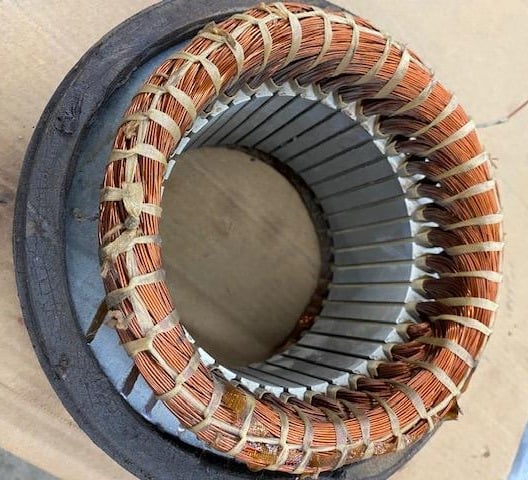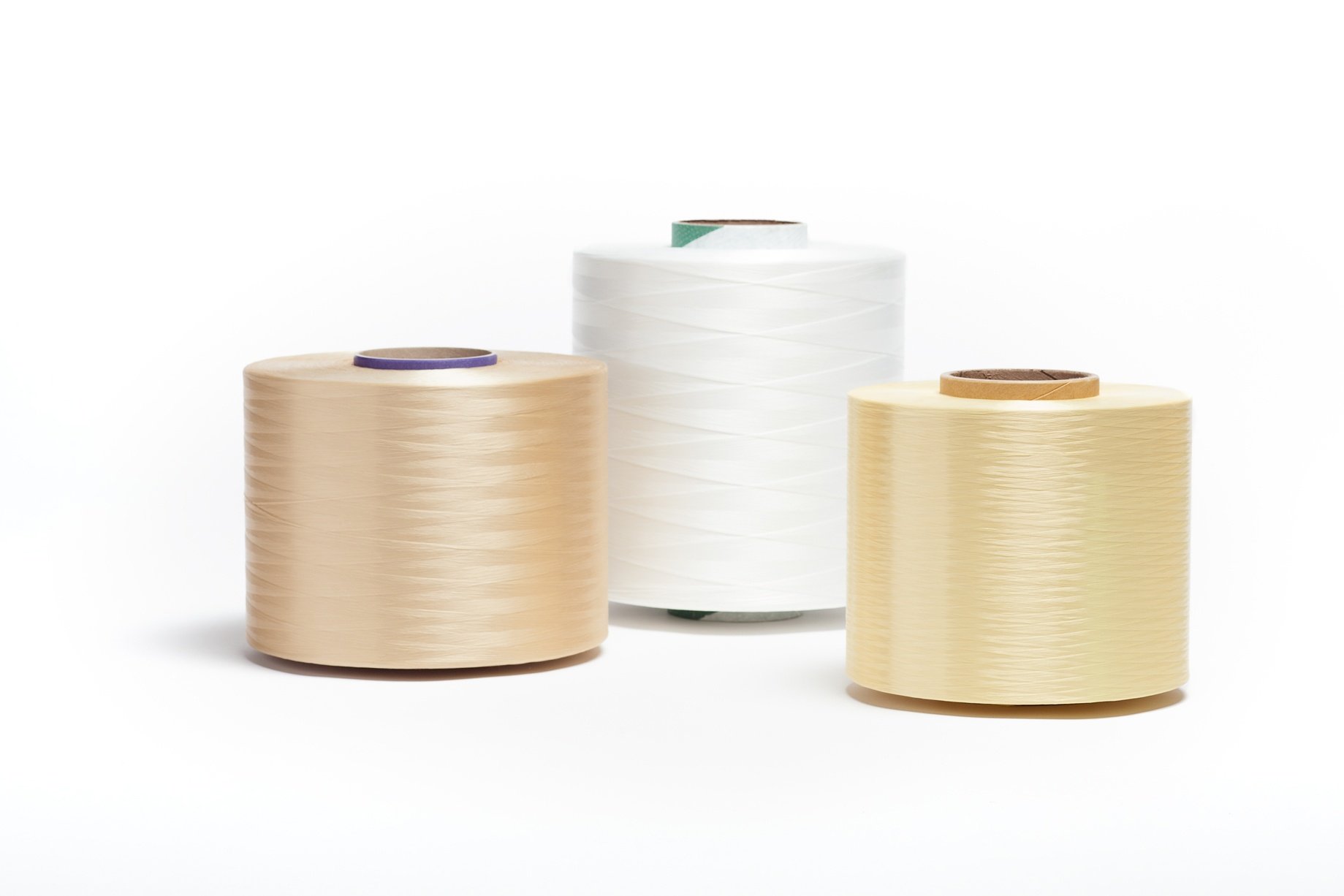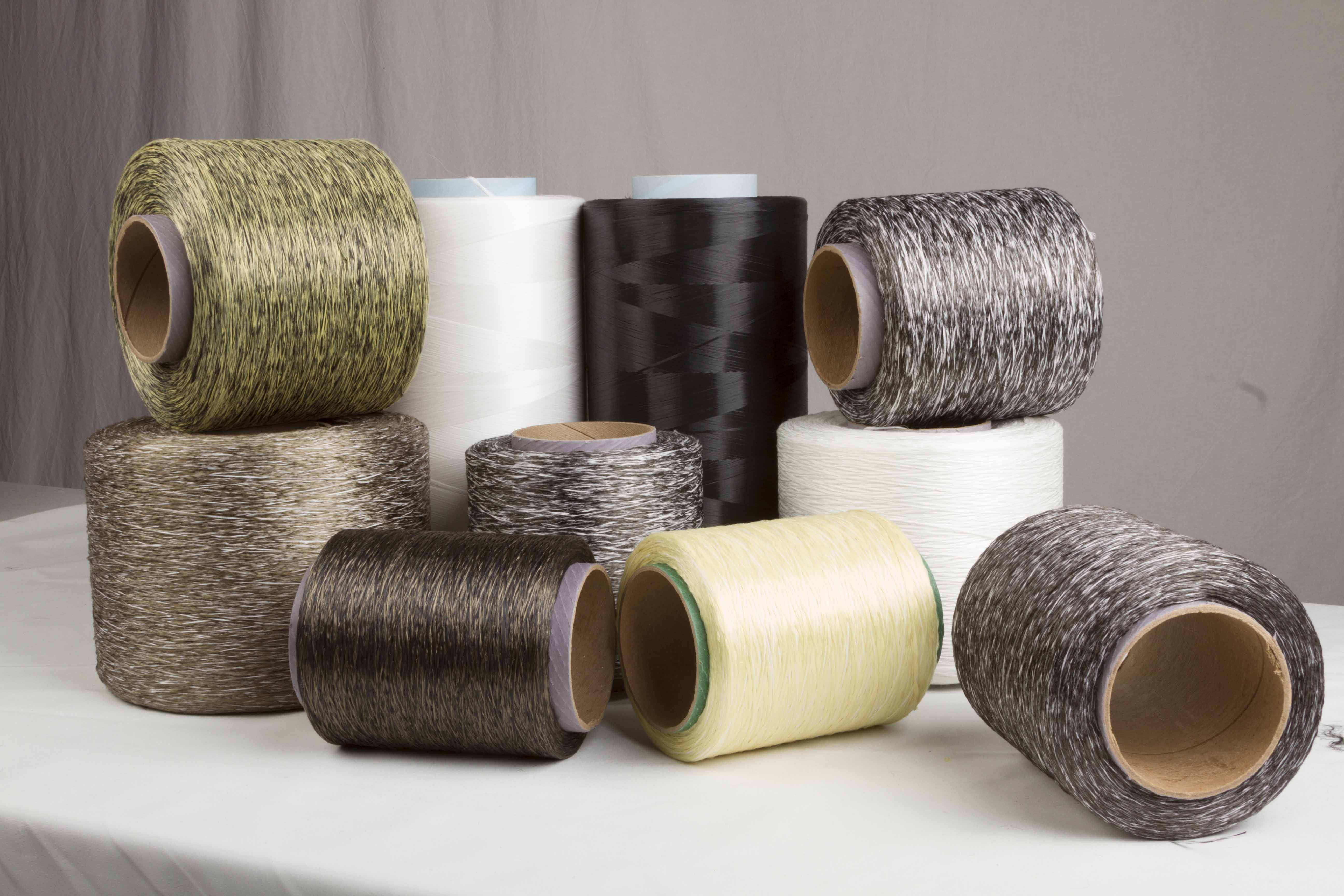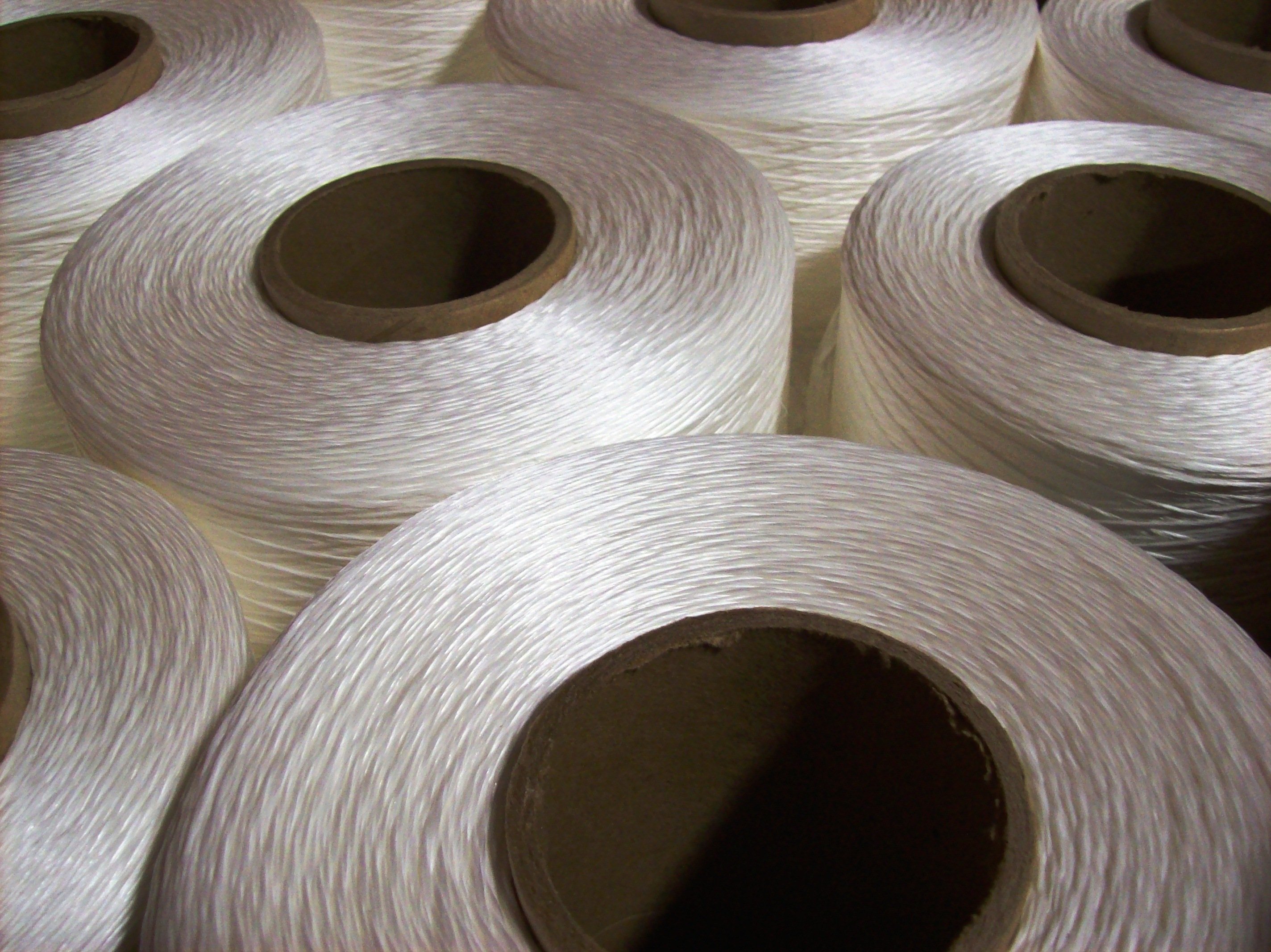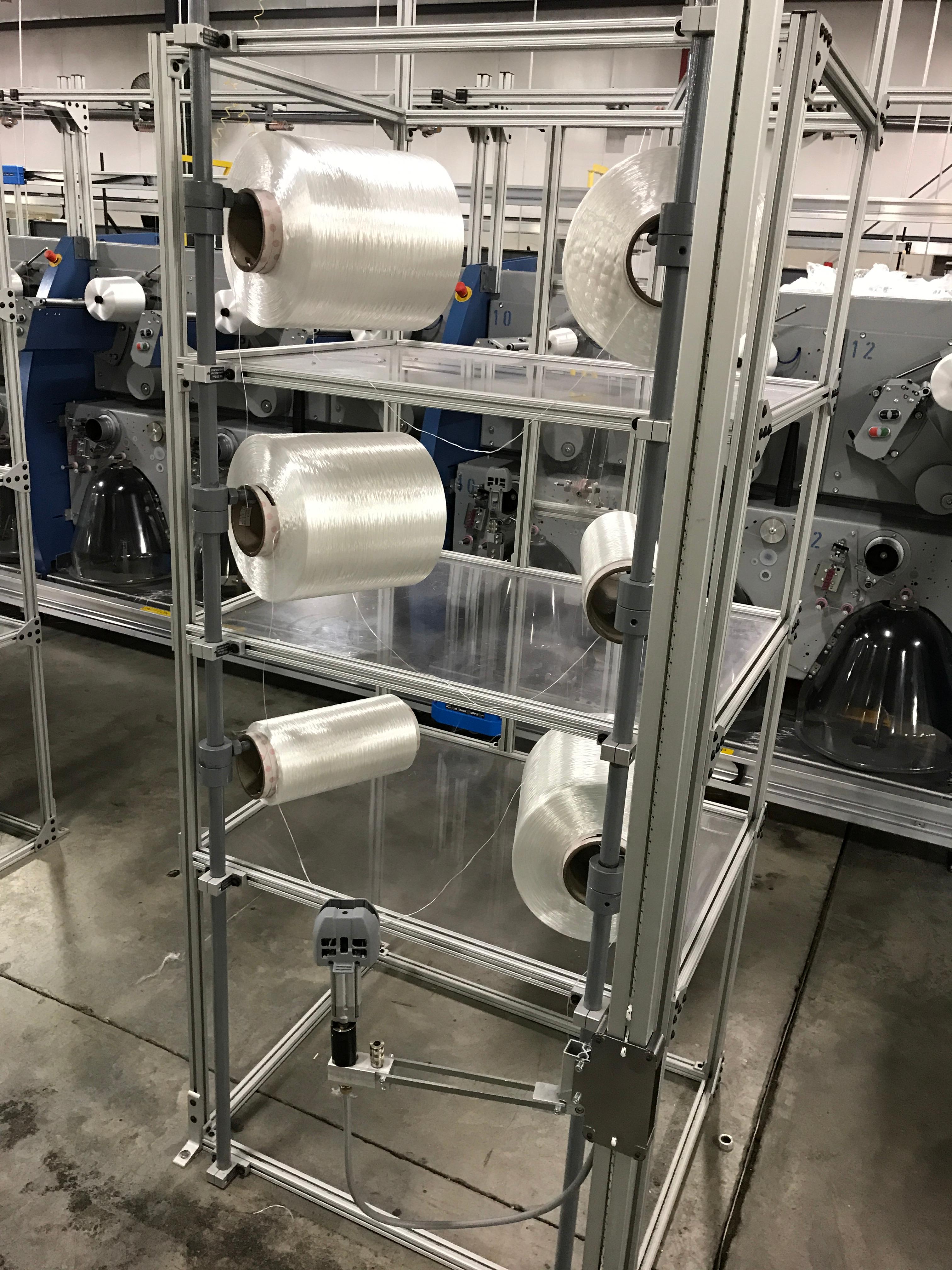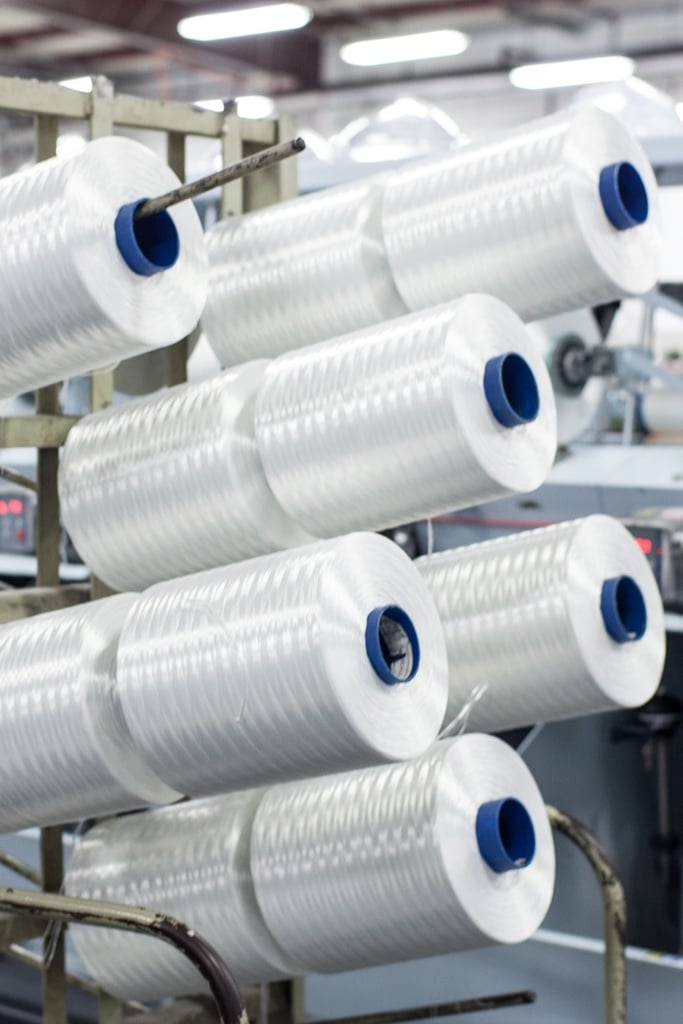When you buy an electric motor, what is often unseen when handling it is the work that goes into helping extend its life by securing the end coils of windings. This process is called stator lacing. Tightly lacing the coils adds stability and helps protect the windings from vibration, which can cause fatigue and shorten a motor’s life. It also holds electronic, thermal, and other sensory devices in place during the dipping and baking process.
Service Thread’s round lacing cords are available in polyester, nylon, and para-aramid materials such as DuPont™ Kevlar® material. These are cabled constructions, typically three or sometimes four-ply, which offer a round cross-section. Round twisted sizes in nylon and polyester cords can range from number 138 to 690 (tex 135 to 700), offering minimum breaking strengths in the range of 18 to 100 pounds.
However, most common round twisted sizes are number 346 (tex 350), number 415 (tex 400), number 554 (tex 600), and number 690 (tex 700), which offer minimum breaking strengths in the range of 45 to 100 pounds. Round twisted lacing cords number 138 to 690 (tex 135 to 700) will have a diameter between about .01 to .05 inches, while the diameter of most common lacing cords will be .035 inches plus or minus about 15%.
Flat number 554 (tex 600) nylon lacing tape is also a popular choice. Being wider than round twisted thread, it will spread the stress over the coil surface during winding and tying rather than having it located at a small radius. Flat tape also offers increased grip due to its larger surface area.
Round thread can be laced evenly from large supply packages of more than or equal to 10 pounds. Flat constructions are typically rolled to prevent any twisting of the tape. Round twisted lacing cords are much preferred over cable ties, which turn brittle over time through oxidation and break and leave sharp edges which can cut installers’ hands when reaching into confined spaces.
Lacing cords may have some physical requirements, depending on the motor design and coil assembly.
Advantages of Round Twisted and Flat Lacing Tape Stator Cords
- By Service Thread
- 06/29/20
- Technology, Specifications
- 0 Comments
- By Service Thread
- 01/03/20
- 0 Comments
Are you using the most modern and advanced yarn and thread? If you haven’t re-evaluated your options lately, it’s a good time to compare the latest yarn and thread materials to see if there is a better choice.
Read more- By Steve Zande
- 09/30/19
- 0 Comments
We sat down with Jen Hanna, the director of business development at Innegra™, to discuss the benefits of Innegra™ and how it can be put to the best use in a variety of applications. It’s a relatively new material to the market and many Service Thread clients have requested more information about it.
Read more- By Steve Zande
- 04/23/19
- 1 Comment
In our previous article, What is Innegra™?, we looked at the basic properties of this relatively new fiber and some common uses for it. Now we’d like to share some tips for deciding whether it’s right for your purpose.
Read more- By Steve Zande
- 04/17/19
- 0 Comments
Are you familiar with Innegra™? It’s a new fiber on the market not yet well known among buyers and manufacturers of fiber products. But it has a wide variety of uses, from innovative aerospace materials to extreme sports equipment.
Read more- By Eric Shippee
- 02/09/18
- 0 Comments
A creel is simply a frame on which the feeding thread or yarn bobbin is fitted. Often, the creel is fitted with a yarn tensioning device which controls tension variation. Proper placement and stabilization of thread and yarn at the beginning of the product manufacturing process is critical. “Think of a creel as the foundation of a building,” states Neal Fournier, Facilities & Maintenance Manager with Service Thread. “It’s likely that process improvement starts after the yarn enters the production process; however, you will be surprised by the gains that can be made by taking a look at using a creel or refining your creel design.”
Read more- By Service Thread
- 07/17/17
- 0 Comments
Advantages of Round Twisted and Flat Lacing Tape Stator Cords
- By Service Thread
- 06/29/20
- Technology, Specifications
- 0 Comments
When you buy an electric motor, what is often unseen when handling it is the work that goes into helping extend its life by securing the end coils of windings. This process is called stator lacing. Tightly lacing the coils adds stability and helps protect the windings from vibration, which can cause fatigue and shorten a motor’s life. It also holds electronic, thermal, and other sensory devices in place during the dipping and baking process.
Service Thread’s round lacing cords are available in polyester, nylon, and para-aramid materials such as DuPont™ Kevlar® material. These are cabled constructions, typically three or sometimes four-ply, which offer a round cross-section. Round twisted sizes in nylon and polyester cords can range from number 138 to 690 (tex 135 to 700), offering minimum breaking strengths in the range of 18 to 100 pounds.
However, most common round twisted sizes are number 346 (tex 350), number 415 (tex 400), number 554 (tex 600), and number 690 (tex 700), which offer minimum breaking strengths in the range of 45 to 100 pounds. Round twisted lacing cords number 138 to 690 (tex 135 to 700) will have a diameter between about .01 to .05 inches, while the diameter of most common lacing cords will be .035 inches plus or minus about 15%.
Flat number 554 (tex 600) nylon lacing tape is also a popular choice. Being wider than round twisted thread, it will spread the stress over the coil surface during winding and tying rather than having it located at a small radius. Flat tape also offers increased grip due to its larger surface area.
Round thread can be laced evenly from large supply packages of more than or equal to 10 pounds. Flat constructions are typically rolled to prevent any twisting of the tape. Round twisted lacing cords are much preferred over cable ties, which turn brittle over time through oxidation and break and leave sharp edges which can cut installers’ hands when reaching into confined spaces.
Lacing cords may have some physical requirements, depending on the motor design and coil assembly.
Older Posts
Overview of Advanced and Modern Materials for Yarn and Thread Construction
- By Service Thread
- 01/03/20
- 0 Comments
Are you using the most modern and advanced yarn and thread? If you haven’t re-evaluated your options lately, it’s a good time to compare the latest yarn and thread materials to see if there is a better choice.
Read moreWe sat down with Jen Hanna, the director of business development at Innegra™, to discuss the benefits of Innegra™ and how it can be put to the best use in a variety of applications. It’s a relatively new material to the market and many Service Thread clients have requested more information about it.
Read moreWhen to Choose Innegra™
- By Steve Zande
- 04/23/19
- 1 Comment
In our previous article, What is Innegra™?, we looked at the basic properties of this relatively new fiber and some common uses for it. Now we’d like to share some tips for deciding whether it’s right for your purpose.
Read moreWhat is Innegra™?
- By Steve Zande
- 04/17/19
- 0 Comments
Are you familiar with Innegra™? It’s a new fiber on the market not yet well known among buyers and manufacturers of fiber products. But it has a wide variety of uses, from innovative aerospace materials to extreme sports equipment.
Read moreA creel is simply a frame on which the feeding thread or yarn bobbin is fitted. Often, the creel is fitted with a yarn tensioning device which controls tension variation. Proper placement and stabilization of thread and yarn at the beginning of the product manufacturing process is critical. “Think of a creel as the foundation of a building,” states Neal Fournier, Facilities & Maintenance Manager with Service Thread. “It’s likely that process improvement starts after the yarn enters the production process; however, you will be surprised by the gains that can be made by taking a look at using a creel or refining your creel design.”
Read more

